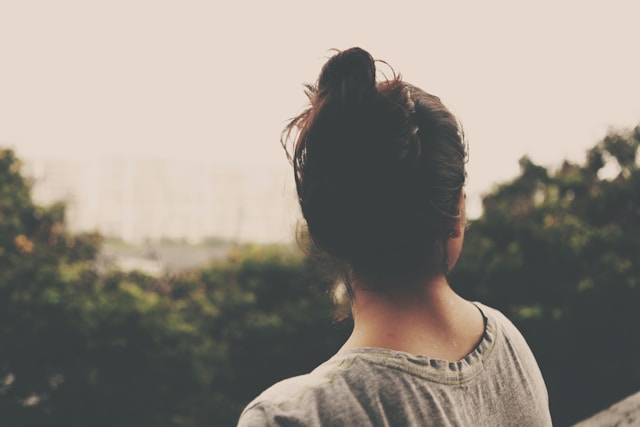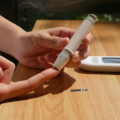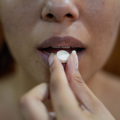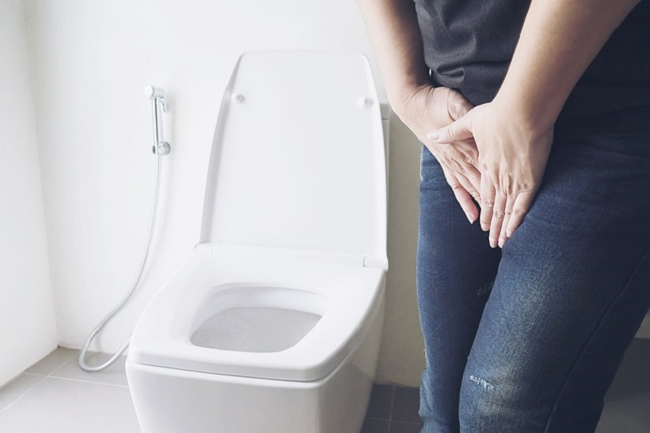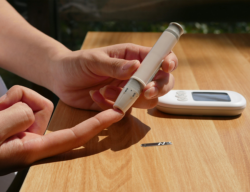I want to tell you about a friend of mine. She used to get yeast infections and urinary tract infections (UTI) all the time. She was miserable, plagued with either or both of these nearly every month for years. The yeast infections would be terribly uncomfortable while the UTIs would be incredibly painful. These nasty little infections would show up right as she was leaving for vacation or when she had a big work event. One time, she actually had to rush to the pharmacy right before a hurricane hit, terrified to be without antibiotics during the storm.
A nurse told her to change her soap. A urologist ordered a scope of her bladder. Her doctors gave her refillable prescriptions for antibiotics and anti-fungals telling her to take them whenever she needed them—which was all the time. Not one person told her that these infections could be caused by her birth control pills. No one told her that she could have avoided all of that pain and misery and embarrassment by just choosing different contraception; not to mention the side effects of spending that much time on antibiotics.
Even as far back as 1969, Barbara Seaman warned against this in The Doctors’ Case Against the Pill.
The Pill, by interfering with the natural secretions of the vagina, leaves women susceptible to a variety of infections, including syphilis and gonorrhea. Those who use the Pill develop VD, other sexually transmitted infections, and vaginitis twice as often as the female population as a whole.
I’m not even going to address the increased risk for sexually transmitted infections in this article but you can read about it further in this article from the International Perspectives on Sex and Reproductive Health.
While not printed on the risk communication that accompanies hormonal birth control, it is widely known that these methods of contraception change the natural balance of the vagina. In materials from the California Medical Association submitted during the Nelson Pill Hearings (pg. 6284):
One side effect of the pill does call for treatment. Yeast vaginitis occurs in about 30 percent of the users… This inflammation is not a serious health problem, and it responds well to treatment. Sometimes the treatment can be administered without even discontinuing the use of the pill.
Because why would we want to address the problem, when we can just treat the symptom?
Current Research
The research now concurs with what they said back then. Even WebMd says:
Taking hormone replacement therapy (HRT) or birth control pills changes the balance of hormones in the body, especially estrogen and progesterone. Just as in pregnancy, higher estrogen levels can cause yeast infections. Some women find they’re more likely to get yeast infections at specific times in their menstrual cycles.
As for urinary tract infections, the National Institute of Diabetes and Digestive and Kidney Diseases recommends that women with recurrent UTIs switch to a different method of birth control.
It’s not just the birth control pill that causes these issues. Side effects of the NuvaRing include vaginal infections. While I was unable to find any concrete research, one look at questions and experiences posted on health forums show that users of the Mirena IUDs are also suffering from these infections. How could they not be? Medications of any kind can change the chemical make-up of the body.
Compared to blood clots, stroke, depression, and suicidal thoughts, UTIs and yeast infections may seem rather insignificant. But when you factor in the what it’s like to live with these recurring infections: the pain and irritation, the stress on your sex life and stress on your partner, the money for medical tests and treatments (not to mention the time)—the cumulative effect is quite significant. Like weight gain and loss of libido, these things aren’t immediately life threatening but they are certainly damaging to the quality of your life. And so I ask again, why are these side effects acceptable? How much to do women have to suffer in the name of contraception? And when are we going to start demanding better?
Epilogue: What happened to my friend?
There’s an inherent embarrassment anytime something is wrong with our nether regions that doesn’t exist with something like strep throat or a even a stomach bug. So much so that I started this post about my “friend” instead of myself. I’m sure you could see right through it. I’ve written about having a stroke, gaining weight, feeling depressed, loss of libido, my infertility, and even that I wear compression socks. Yet somehow talking about yeast infections and UTIs was where I was going to draw the line. Why? They weren’t my fault. If anything, they were perhaps an alarm bell that my body did not tolerate birth control pills.
So what happened to me? I had a stroke, stopped taking birth control pills, and I rarely get infections anymore. Is there a connection between women who get yeast infections and UTIs and those who go on to have blood clots? Who knows? But we certainly aren’t going to find out by not talking about them.
We Need Your Help
More people than ever are reading Hormones Matter, a testament to the need for independent voices in health and medicine. We are not funded and accept limited advertising. Unlike many health sites, we don’t force you to purchase a subscription. We believe health information should be open to all. If you read Hormones Matter, like it, please help support it. Contribute now.
Yes, I would like to support Hormones Matter.
Photo by name_ gravity on Unsplash.
This article was published originally in September 2016.
